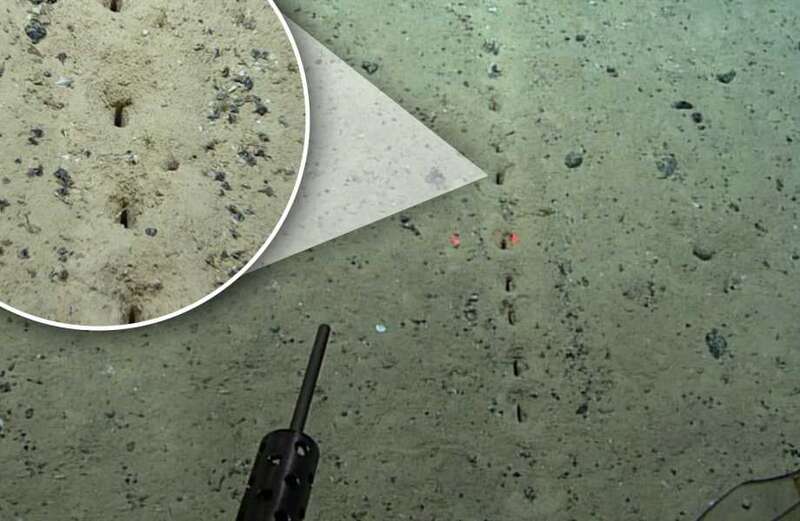MYSTERIOUS holes bored 1.7 miles beneath the surface of the Atlantic Ocean have stumped scientists.
Photos show that the dents punched into an otherwise flat and sandy surface connect into neat, straight lines.

What did they find at the bottom of the Atlantic Ocean?
A remote underwater craft piloted by the National Oceanic and Atmospheric Administration (NOAA) stumbled across unusual perforations over the weekend.
A short line of small holes were mysteriously found in the seabed.
The crew of the Okeanos Explorer said they looked manmade but could offer no further explanation as to how they got there.
 Are there illegal baby names? Surprising monikers that are BANNED in other countries, from Sarah to Thomas
Are there illegal baby names? Surprising monikers that are BANNED in other countries, from Sarah to Thomas
Okeanos is investigating the Mid-Atlantic Ridge, a largely unexplored area of seafloor that's home to a huge submerged mountain range.
"We observed several of these sublinear sets of holes in the sediment," NOAA Ocean Exploration reported.
"These holes have been previously reported from the region, but their origin remains a mystery.
"While they look almost human made, the little piles of sediment around the holes make them seem like they were excavated by ... something."
The July 23 dive visited the summit of an underwater volcano north of the Azores, reaching depths of 1.7 miles.
Okeanos was loaded with a remotely operated camera to safely record discoveries.
The crew was mapping the seafloor and studying coral and sponge communities in the uncharted region.
NOAA frequently livestreams its remote vehicle dives, which are operated from a ship at the water surface.
What are the mysterious holes at the bottom of the ocean?
The area where the holes were found spans the north-south length of the Atlantic Ocean.
The stretch of rocky terrain is the site of frequent earthquakes and hydrothermal vents that form when magma rises to the seafloor.
 All about Rachel Nickell who was murdered in front of her son Alex Hanscombe
All about Rachel Nickell who was murdered in front of her son Alex Hanscombe
Since most of the area remains largely unexplored, scientists haven't found an explanation yet.
But the agency posted photos of the discovery on social media and encouraged followers to speculate about the holes' origins.
"I wonder if some company may be conducting sea floor samples," one user wrote on Facebook.
"That might explain the straight lines and the spacing of the holes. Especially if you have seen others in the region. Only thing is, everything else around it doesn't seem like it's been disturbed."
Another wrote: "Upwelling! Freshwater from a land source bubbling up? As if there's a rock under there allowing the flowing water to break through in that linear manner."
And a third said: "Some type of crab maybe."
Other people jokingly suggested that the holes may have been left by extraterrestrials.
"I'm not saying it was the aliens...but it was the aliens," read a meme shared by one Facebook user.
The likeliest explanation appears to be that sand is falling through gaps in the rock beneath it.
One user commented: "This to me looks like the sediment is falling through, or water flowing up from a crack in a geological shelf or cave roof.
"I suspect either ancient coral or some sedimentary rock structure underneath has a void for which material is being washed out further away.
"I would start to see if there was any caves or deformation in the seabed."
The Mid-Atlantic Range stretches 10,000 miles, making it the longest mountain range in the world.


We pay for your stories! Do you have a story for The Sun Online Tech & Science team? Email us at tech@the-sun.co.uk



































